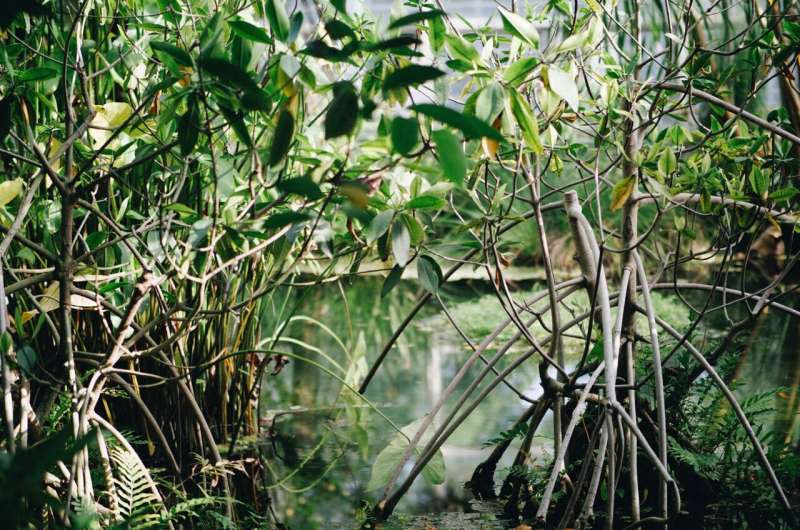November 23, 2023 report
This article has been reviewed according to Science X's and . have highlighted the following attributes while ensuring the content's credibility:
fact-checked
peer-reviewed publication
trusted source
proofread
Sea level rise found to encourage mangrove expansion on Great Barrier Reef islands

A team of environmental scientists at the University of Wollongong Faculty of Science Medicine and Health's School of Earth, Atmospheric and Life Sciences, working with a colleague from the University of New South Wales, has found that sea level rise is encouraging mangrove expansion on some Great Barrier Reef islands. In published in the journal Proceedings of the Royal Society B, the group describes how they used a two-pronged approach to measure plant diversity and number of trees growing on the Howick Islands and what they found.
As global warming continues, more and more ice around the world melts into the sea, leading to rising sea surface levels. Such rising is expected to be problematic for many countries as it leads to flooding of coastal areas and overrun of low-lying islands. One particular impact of sea level rise has already been noted: the decline of mangrove forests.
Mangroves are uniquely suited to growing along coastal shorelines as they have evolved to handle the salty terrain. But such proximity to the sea also puts them at risk when sea levels rise, because they become flooded and drown. In this new effort, the team in Australia has found an exception to this trend—mangrove forests growing on the Howick Islands, which are part of the Great Barrier Reef.
The Howick Islands are different than other islands due to their history. Twelve thousand years ago, as sea levels rose at the end of the Last Glacier Maximum, coral reefs grew to take advantage of the changing climate. But when sea levels fell again, 10,000 years later, the reefs died due to dehydration. As they did so, they left behind a mass of salt and dead coral, mixed with ocean sediment—with small outcroppings of mangroves around the edges of the islands. Now, as sea levels rise again, conditions are improving, and because of that the mangroves are flourishing.
To learn how the mangroves are faring on the islands, the researchers flew drones over them to capture imagery from the sky. They also walked and waded through some of the mangrove forests to measure tree characteristics such as height and diversity.
They then compared what they found with the results of a similar survey conducted back in 1973. In so doing, they found that the mangrove forests on the islands have grown by 10,000 metric tons over the past half century, and that the mangrove forests have grown much denser.
Such a change is considered a good thing, because mangroves soak up large amounts of carbon dioxide from the air around them.
More information: Sarah Hamylton et al, Mangrove expansion on the low wooded islands of the Great Barrier Reef, Proceedings of the Royal Society B: Biological Sciences (2023).
Journal information: Proceedings of the Royal Society B
© 2023 Science X Network




















